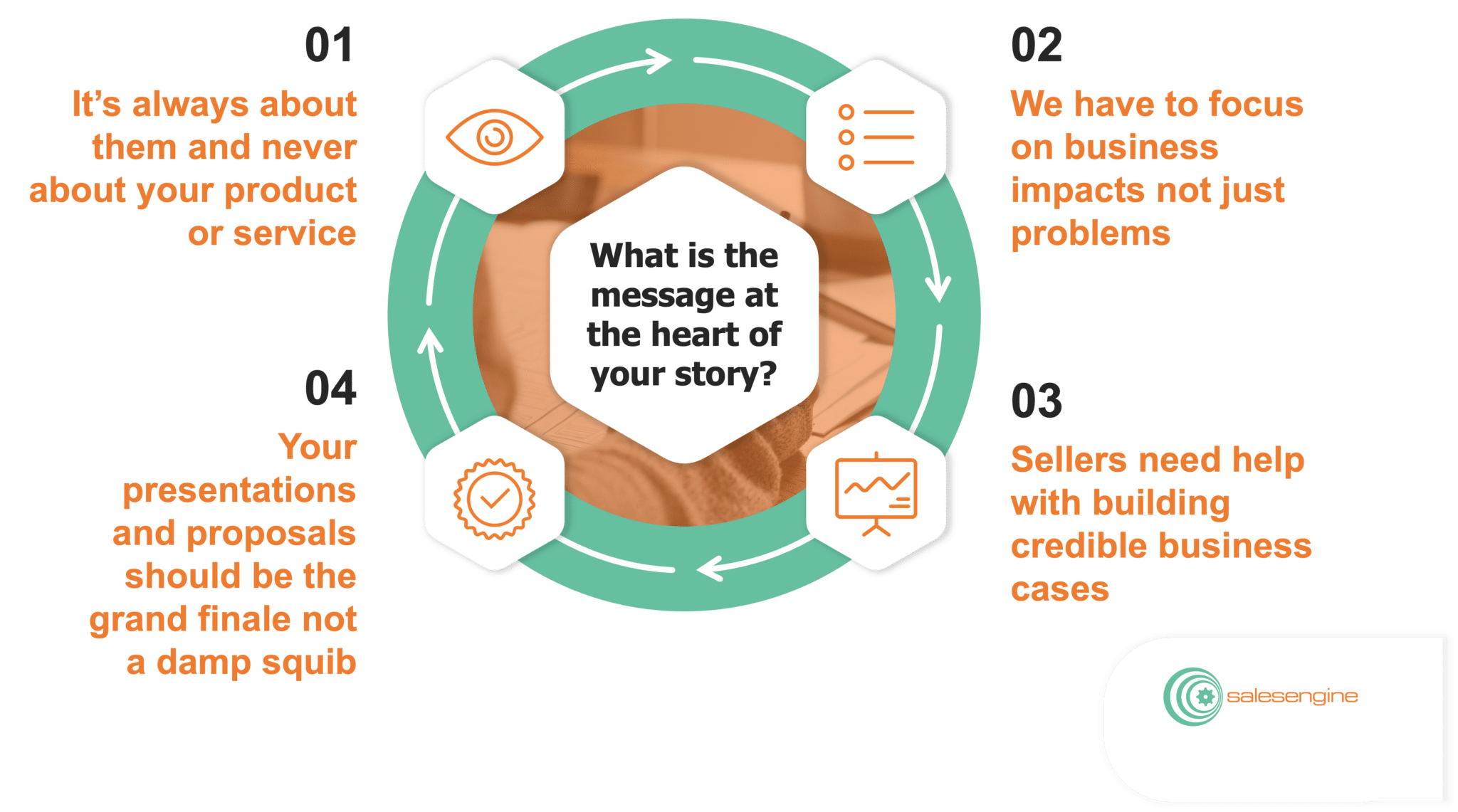The difference between closing a deal and losing it often comes down to one critical factor: how well you articulate your product’s true value. This art of value selling took center stage in our recent webinar, “Mastering Value Selling: Insights from Industry Experts,” featuring two industry experts:
- Steve Robinson, CEO of Sales Engine
- Steve Richard, SVP of Revenue Enablement at Mediafly
The two delved into the intricacies of value selling, from its potential impact to what makes an effective strategy. You can watch the full webinar below.
The Impact of Value Selling on Win Rates
Steve Richard presented a striking insight: When a value consultant is attached to an opportunity, win rates are two-and-a-half times higher than deals without such support — underscoring the critical importance of incorporating value selling techniques into the sales process.
But what exactly drives this dramatic improvement? The answer lies in the power of a well-crafted business case. When sales teams can clearly articulate the quantifiable value of their solution to a prospect’s specific situation, they’re able to cut through the noise and directly address the customer’s bottom line.
It’s not just about having a value consultant on hand, however. The webinar stressed the importance of integrating value selling throughout the entire sales process. From initial conversations to final proposals, consistently demonstrating value helps keep prospects engaged and moves deals forward more effectively.

Understanding — and Addressing — Customer Needs
Also discussed is how value selling goes beyond pitching product features, requiring salespeople to ask more insightful questions to uncover the customer’s true business pain points and objectives. Steve Richard emphasized the need for “insatiable curiosity” in sellers. He described the process of establishing value as “incessant questioning,” going layer by layer to understand the specifics of the buyer’s challenges and opportunities.
Steve Robinson pointed out that, “Salespeople have gotten very good at questioning to establish need in order to position a product or solution.” But he stressed that this isn’t enough today. Sellers need to get better at “big picture questioning” — understanding customer outcomes as well as direction, vision, and mission.
This level of understanding allows reps to connect their value proposition directly to the customer’s unique situation. It’s not just about ROI calculations, but also demonstrating how your solution can contribute to the buyer’s overarching business goals.
The speakers also touched on the importance of balancing transactional and strategic approaches, acknowledging that while value selling is powerful, it’s crucial to read the situation and adapt your approach based on the customer’s readiness for more strategic engagement.
The Power of Storytelling in Value Selling
While value selling focuses on crunching numbers and proving ROI, the best sellers must weave these figures into a compelling narrative.
This means being able to articulate the value story across different levels of the organization. “Salespeople have to be the storytellers,” Steve Robinson noted. “It’s about how we take this and turn it into a story where everyone within the organization can get it, read it, understand it, and say yes to it.”
A good value story should:
- Start with the big picture of where the buyer’s organization is heading
- Illustrate how your solution fits into and supports that vision
- Use concrete, relatable examples to bring the potential value to life
- Incorporate both quantitative and qualitative benefits
- Adapt the story for different stakeholders in the buying process

This level of quality should be maintained across the buyer’s journey. Sellers commonly start strong but lose steam in the later stages of the sales process, particularly when it comes to the final proposal. Keep your value story consistent and compelling by carrying out the same level of care and attention throughout.
Organizational Ownership of Value Selling
When asked who owns the process of building business cases in their organizations, webinar attendees responded as follows:
- 64% said it was owned by sales reps and managers
- 20% had dedicated value engineering teams
- A small percentage indicated ownership by product marketing or other departments
Steve Robinson expressed enthusiasm about the growing trend of dedicated value teams, pointing out that these specialists can be essential in handling the complexities in building robust business cases.
Regardless of who owns the process, value selling needs to be integrated across the entire sales organization. Implement processes that support and encourage value selling to create a culture where every seller understands and can effectively communicate the value proposition.
Future Trends
As the webinar wrapped up, the speakers shared some exciting trends that are shaping value selling:
- Self-Service Tools: Intuitive, user-friendly tools allow both sellers and buyers to explore value propositions independently.
- Connecting Sales and Customer Success: Continue the value journey after a deal is closed to more effectively drive upsells, cross-sells, and renewals.
The two also touched on the potential of AI in enhancing value selling processes. While not explored in depth, they hinted at the possibilities of using AI for faster, more accurate value calculations and more personalized value propositions.
The Bottom Line
By focusing on customer needs, crafting compelling narratives, and integrating value across the entire organization, sales teams can stay ahead of the curve. As the speakers illustrated, value selling is more than just a technique — it’s a comprehensive approach that fosters stronger relationships and keeps your team competitive.

Comments are closed.